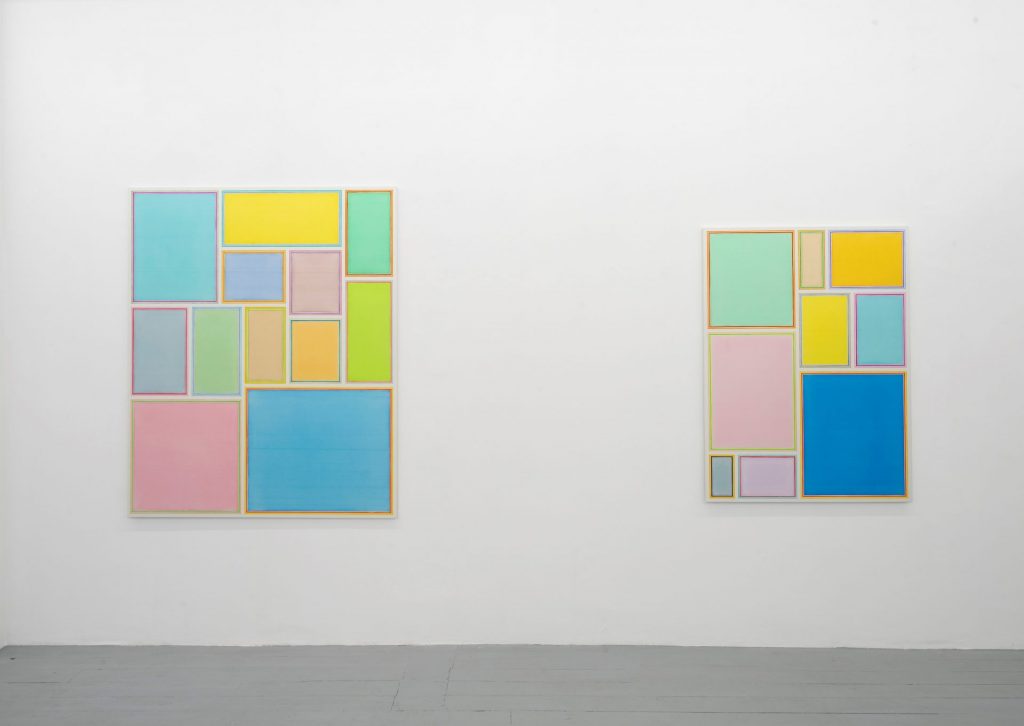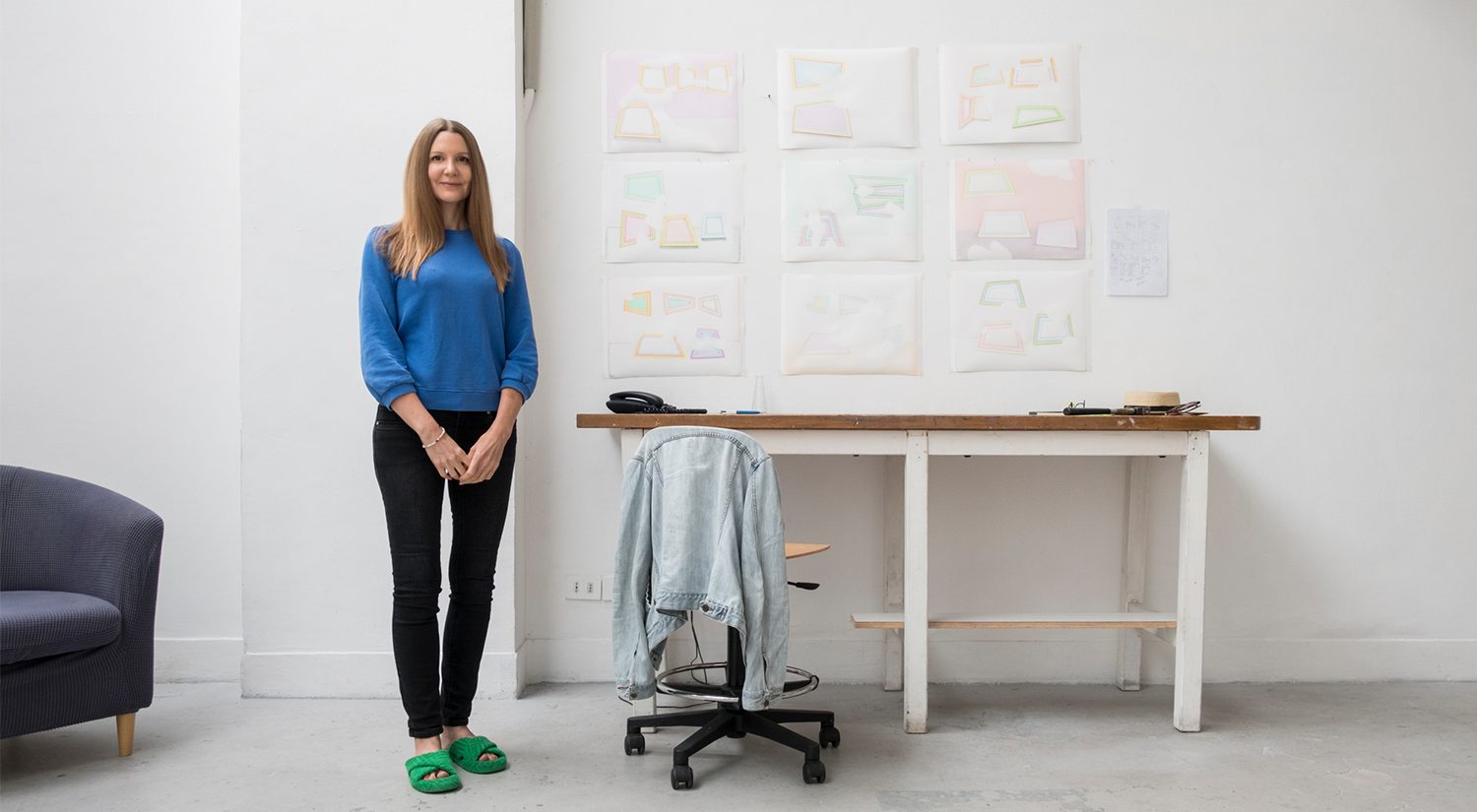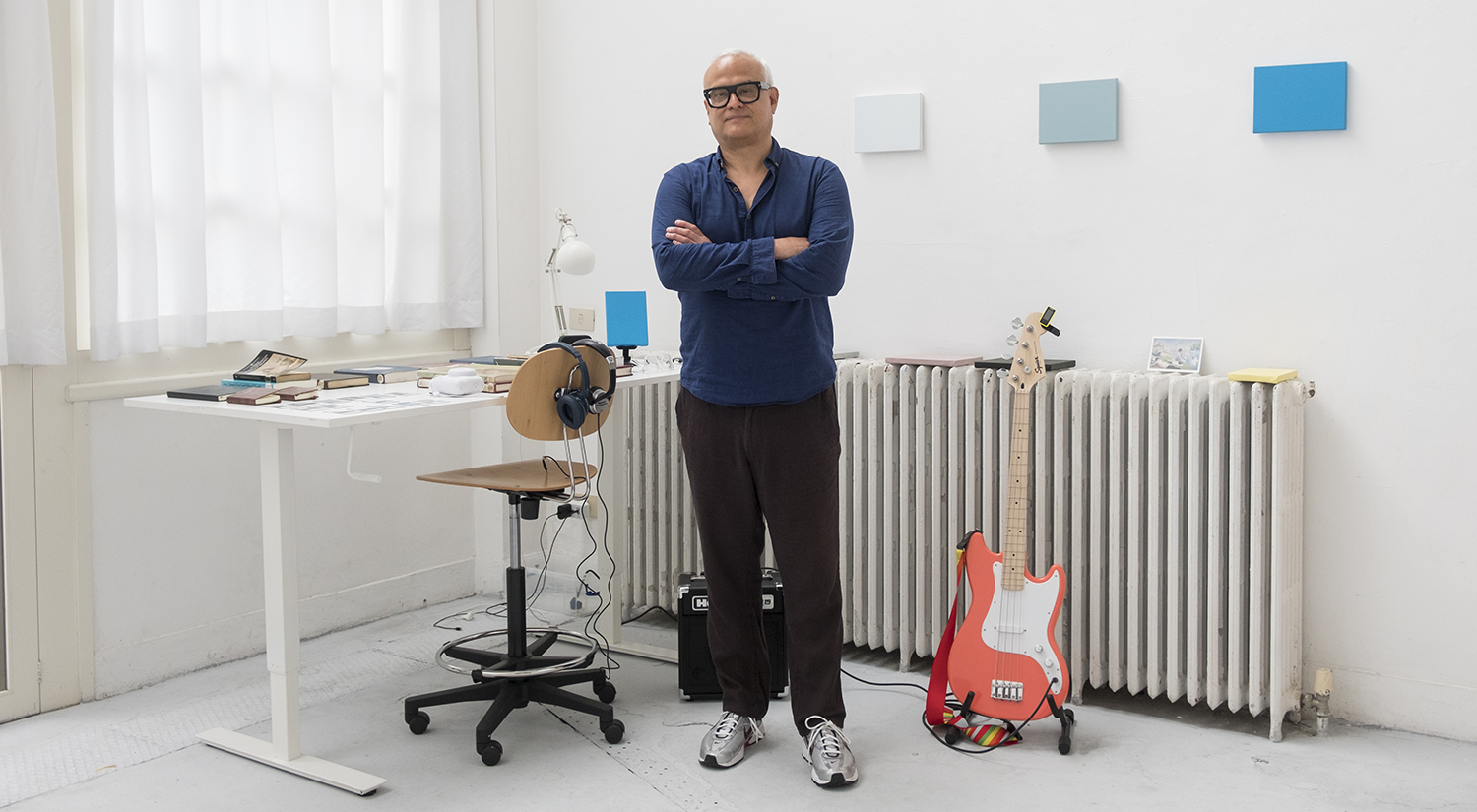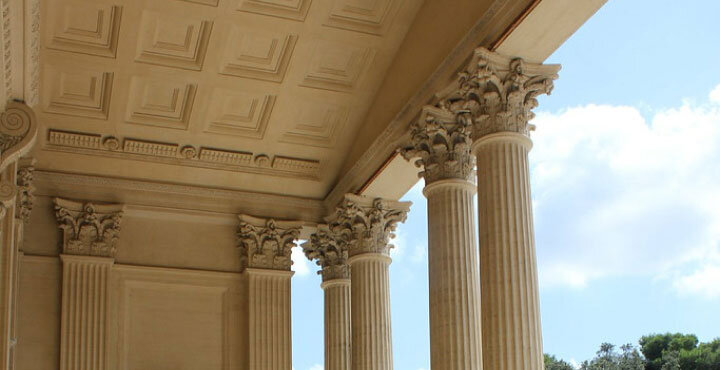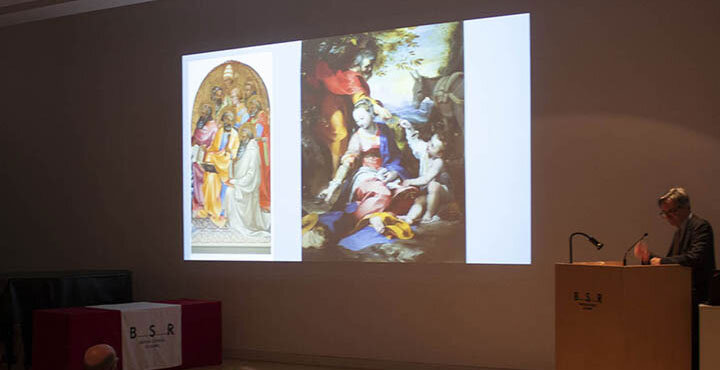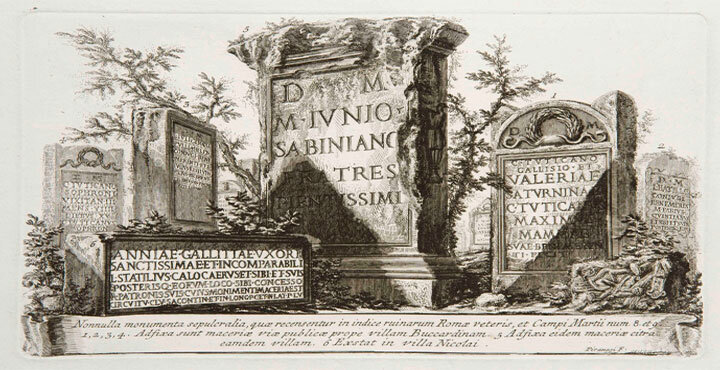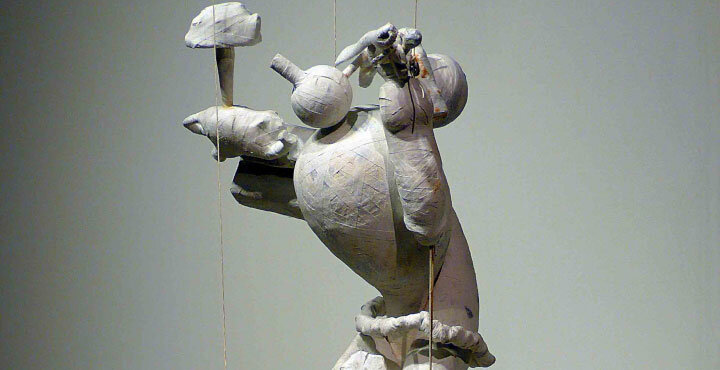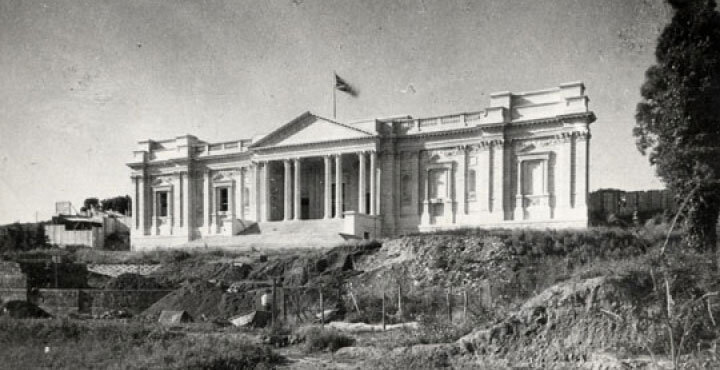An interview with Selma Parlour, Abbey Fellow in Painting, in which she speaks about the work she has produced during her residency at the BSR from April – June 2023, ahead of the Summer Open Studios.
What kind of research project are you developing in Rome and what images are inspiring you through your residency in Italy?
Whilst in Rome I’ve been looking to the trompe l’oeil of contrived architecture, the recesses, borders, and stylistic framing of space, for example those of Andrea Pozzo at the Chiesa di Sant’ Ignazio di Loyola. The frescoes at the House of Augustus at the Roman Forum are a revelation for their symmetry and organisation of interior space. I’m also thinking about the irregular negative shapes of fallen fresco, and how time and absence resonate within relics. I’m making small canvases and also works on paper.

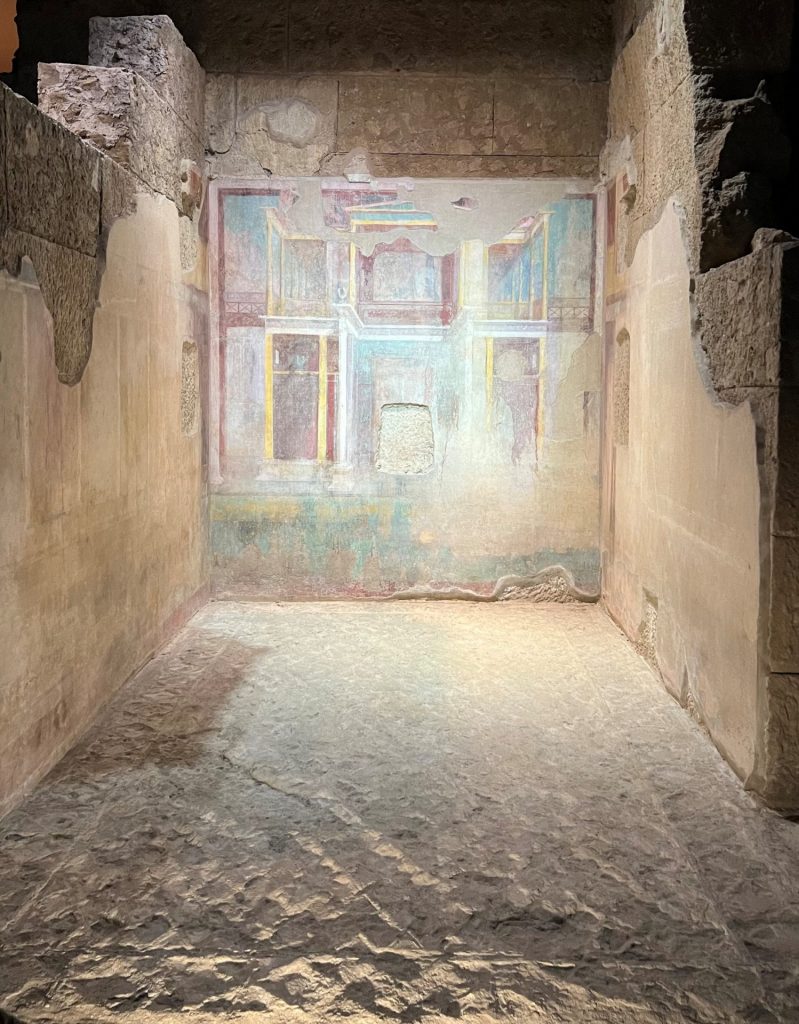
What’s the relationship between your paintings and the modernist grid?
Paintings are both images and objects. One dominant conception of modernism saw painting’s objectness and imageness theoretically separated and made incongruent. The modernist grid adhered to painting’s flatness (its two-dimensionality) in stark contrast to the art of the past (easel painting) with its illusion of three-dimensional space. Or to put it another way, the grid was emblematic of a call for objectness over illusion. If we consider Piet Mondrian’s extraction of the additional frame convention, and his spatial organisation away from perspective (the space of rendered objects), we see how flatness, and the removal of the heavy gilt frame, effected the image and in turn presumed a different activity of the viewer (we don’t look into abstract paintings or cognitively project ourselves).
I was born too late to be a modernist. In my Salon series, I apply illusion to the grid. Unlike Mondrian’s opaque colour that maps flatness, each of my rectangles in my grid paintings is conceived as a codified representation of a painting in a salon hang. Through transparency and illusion (my successive shaded bands of colour), a painting playfully references its history and display, and that a resistance to illusion has run its course.
